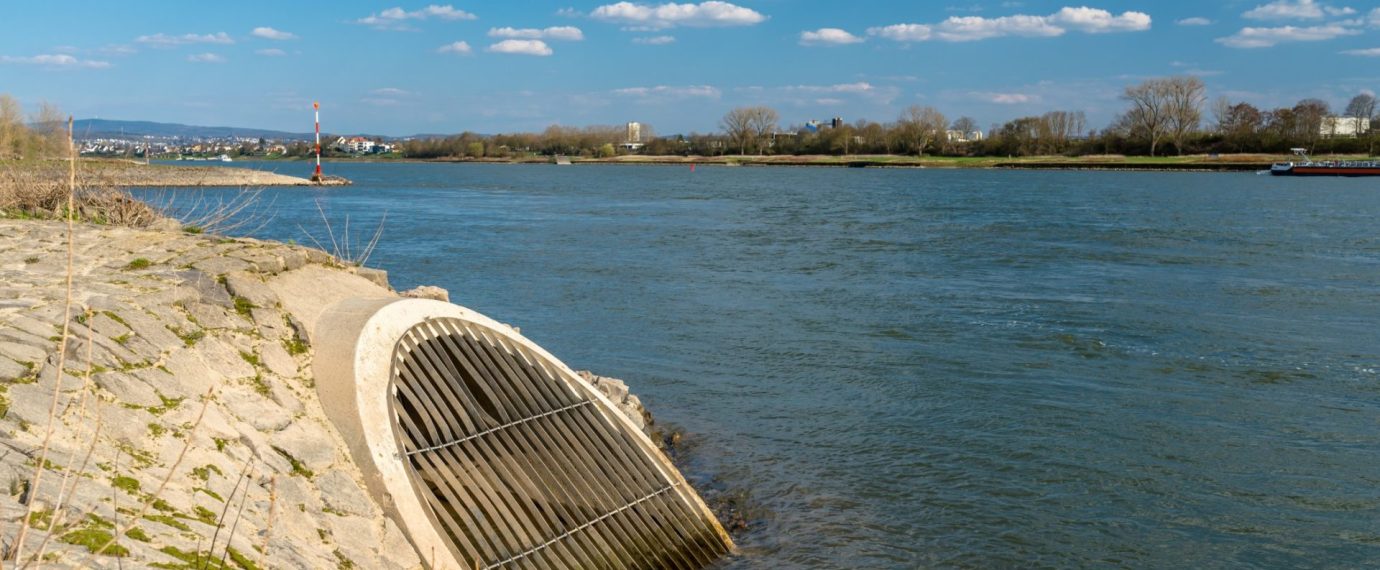Many states require facilities covered under a general industrial stormwater permit to collect stormwater samples and have them analyzed for common pollutants. Stormwater pollutants vary by facility and industry because the potential pollutants will be dependent on the materials and equipment stored inside and outside of the facility. Two common stormwater pollutants are zinc and total suspended solids (TSS). It is not always clear where a pollutant is coming from, which makes lowering the level of that pollutant in the stormwater runoff quite challenging.
If a stormwater sample is collected and has a high concentration of a pollutant, what should be done to lower that number? The first step to reducing pollutants is to identify the source of the pollutant. After a source is identified, best management practices can be implemented to help control or reduce the exposure of potential pollutants.
ZINC
Common Sources
Zinc is a common metal found in stormwater runoff and can come from numerous locations around a facility. Some common sources of zinc are:
- Galvanized metals such chain links fences, HVAC equipment, roofing, gutters/downspouts, steps, and bay doors.
- Motor oil & hydraulic fluid that can be found in equipment, storage tanks, or vehicles.
- Tire dust, which is found in areas with heavy truck and forklift traffic. These areas include loading docks, around tight corners, and frequently traveled forklift routes.
- Fertilizers/Moss Removers
Best Management Practices
After the source of zinc has been determined at the facility, best management practices should be implemented to help control the potential contact between zinc and stormwater runoff. If best management practices are properly implemented, they should help reduce the level of zinc found in the stormwater runoff. Below are the best management practices that can be implemented for the common sources of zinc pollution.
- Galvanized metals can be painted to limit the release of zinc. The galvanized metal can also be replaced with aluminum, steel or PVC.
- Motor oil & hydraulic oil storage containers can be stored within secondary containment to prevent a release in the event of a spill. Spill response equipment should be stored around the property to ensure spills or leaks from tanks, equipment, or vehicles are cleaned up immediately.
- Tire dust can be controlled by implementing a regular sweeping schedule in areas with high traffic or around tight corners. Forklift tires can also be replaced with tires that do not contain zinc.
- Fertilizers/moss removers should only be applied directly to the areas that they are meant to treat. Do not apply if rain is in the forecast for the next couple of days, as it is much more likely that the fertilizer or moss remover will be picked up by stormwater runoff.
TOTAL SUSPENDED SOLIDS
Common Sources
Total suspended solids (TSS) is one of the most common pollutants found in stormwater runoff. Total suspended solids can be exposed to stormwater in many areas, but some common sources are:
- Dust collectors, if there is a leak or spill during operation or disposal.
- Dumpsters that are leaking or that spill on the ground in the surrounding areas.
- Loading docks with consistent traffic can build up sand and sediment quickly.
- Gravel or exposed dirt on the property will result in higher levels of TSS in the stormwater.
Best Management Practices
After the source of TSS has been determined at the facility, best management practices should be implemented to help control the potential contact between TSS and stormwater runoff. If best management practices are properly implemented, they should help reduce the level of TSS found in stormwater runoff. Below are best management practices that can be implemented for the common sources of total suspended solids pollution.
- Dust collectors should be inspected on a regular basis to ensure that there are no leaks and that the drum or bag is tightly connected to the dust collector. Spill response equipment should be stored near the dust collector to ensure that any spills are cleaned up immediately.
- Dumpsters can be covered when they are not being filled or emptied. Covering a dumpster will greatly decrease the exposure of the contents of the dumpster to stormwater. The dumpsters should also be inspected on a regular basis to ensure the surrounding areas are clean and that good housekeeping is being practiced.
- Loading docks tend to have large buildups of sand and sediment due to trucks regularly driving in and out. A sweeping schedule can be implemented to reduce the amount of sand and sediment exposed to stormwater.
- Gravel or exposed dirt can be managed by paving gravel parking lots, landscaping areas of the property that show signs of erosion to prevent further degradation, and by using silt filters and fences to catch sediment prior to discharge from the property.
Best management practices should be implemented and updated as needed. If current best management practices are not effective in reducing the level of pollutants in the stormwater runoff, additional best management practices will need to be considered.
Sources
Golding, Steven. “Suggested Practices to Reduce Zinc Concentrations in Industrial Stormwater Discharges.” Department of Ecology – State of Washington, June 2008, fortress.wa.gov/ecy/publications/publications



